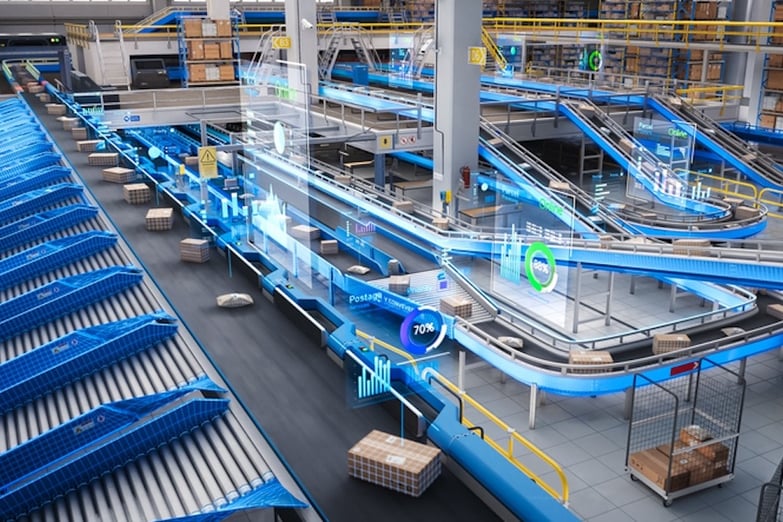Back to articles
Why DECT NR+ is what industrial IoT has been crying out for

DECT NR+ (NR+) is a wireless connectivity standard and the world's first operator-free 5G technology specifically engineered from the ground up to address the previously unmet needs of the industrial IoT.
It’s the only IoT-focused standard that allows industrial and professional users to build private networks that can scale to massive levels from node densities of one hundred to a million per square kilometer, without subscriptions and at low ownership costs. NR+ is a mid-range 1-3 km technology that uses the global, license-exempt 1.9 GHz frequency spectrum and fills a missing gap between short-range, wireless IoT technologies like Bluetooth and Wi-Fi, and long-range wireless IoT technologies like cellular IoT.
As well as being designed to operate with the same seamless and secure performance as cellular networks by offering over 99.99 percent uptime reliability, NR+ also provides exceptional resilience against blind spots and interference, thanks in part to its robust physical layer and operation in the less congested 1.9 GHz frequency band.
Early NR+ adopters
Prime early adopter industrial IoT markets include smart utility metering and smart city applications such as street-lighting and traffic management. However, the potential application range of NR+ is vast and includes automation and robotic control, smart factories, and audio applications in challenging environments such as large arenas and stadiums.
For massive Machine Type Communication (mMTC), industrial IoT is typically served by the cellular IoT LTE-M and NB-IoT standards. But the use of 5G in industrial IoT has stalled due to a lack of low latency solutions, access to private spectrum, and commercial challenges. As the first operator-free 5G technology, NR+ is set to solve this and bring industrial IoT back on track.
The DECT NR+ difference
Cellular IoT addresses many of the needs of industrial IoT, but it doesn't cover them all. It perfectly complements DECT NR+ but they are not the same wireless technology. NR+ is very much designed for static, private, medium-range applications within a boundary of up to 3 km between nodes. Cellular IoT, on the other hand, is long-range and global. This makes cellular IoT perfect for remote monitoring and asset tracking worldwide using public networks in a way that NR+ isn't designed to do.
Cellular IoT offers global ubiquity, security, and reliability. As cellular networks are public, however, they can become congested. That means the available bandwidth and latency can temporarily decrease, and the end user has no control over these fluctuations.
This is a low concern for mMTC applications, however, for certain industrial use cases the latency and bandwidth requirements must be much more predictable. A cost-efficient way to do this has been lacking before now.
In contrast, NR+ can be deployed using a network of easy-to-install private sink nodes (base stations or gateways) that create a self-healing, self-forming mesh network, all at no cost to use. As a private network, NR+ can guarantee quality of service, providing the ultra-reliable bandwidth and low latency that many industrial applications require. However, when it comes to tracking mobile assets or sending data to the Cloud via a gateway, cellular IoT serves as the ideal complement to NR+.
Don't wait, NR+ is here today
NR+ is a radio standard poised to unlock new capabilities for industrial IoT in a way that is both technologically advanced and commercially viable. By partnering with Nordic Semiconductor, you can begin developing industrial IoT applications today. The standard, the hardware, the software, and the development tools—all the necessary components are already in place.
NR+ has bandwidth allocation in almost 100 countries worldwide outside of Asia and some parts of Africa and the Middle East. NR+ reuses known, proven techniques from the cellular world to achieve ultra-reliable data transmissions in point-to-point, star, and mesh networks.
Nordic understands and is fully invested in NR+ and has been integral in helping the DECT Forum to formulate the NR+ standard. As a result, Nordic is the first semiconductor company to provide silicon chips that can run NR+, the proven nRF91 Series. Nordic NR+ customers also benefit from using the same trusted development tools and nRF Connect SDK that Nordic’s existing customers are accustomed to.
And as an open global standard backed by a growing ecosystem of companies and vendors, NR+ is here to stay. This provides a degree of future-proofing that far surpasses any proprietary alternative.
The key takeaway is that DECT NR+ has effectively secured a valuable frequency spectrum. One that can support a radio standard that will deliver unmatched quality of service at low cost. Because this capability has been missing before now, I predict NR+ will accelerate digitalization across many industrial IoT use cases like never before.
- Read more: Massive hype to massive IoT


